7 Essential Tips for Choosing the Perfect Ikea Kitchen Sinks
Table of Contents
- Understanding Different Sink Materials for Your Ikea Kitchen
- Evaluating Size: Finding the Right Fit for Your Space and Needs
- Choosing the Ideal Style to Complement Your Kitchen Design
- Exploring Sink Features: Drainage, Depth, and Accessories
- Setting a Budget: Balancing Quality and Affordability in Sink Selection
- FAQS
- Conclusion
- Related Posts
When choosing the right kitchen sink, homeowners increasingly turn to Ikea Kitchen Sinks for their blend of functionality and style. As a prominent player in the kitchen and bathroom industry, Jiangmen Yingtao Kitchen & Bathroom Co., Ltd. recognizes the growing trend in consumer preferences towards high-quality and aesthetically pleasing sinks. Established in 2010, our company specializes in manufacturing and exporting innovative kitchen sinks that cater to both domestic and international markets. According to recent industry reports, the global kitchen sink market is expected to reach $4 billion by 2025, highlighting the importance of making informed choices. Ikea Kitchen Sinks, with their diverse range and contemporary designs, are particularly appealing to modern homeowners looking for durable options. This blog aims to provide essential tips for selecting the perfect Ikea kitchen sink, ensuring that your kitchen not only looks great but also meets functional requirements.
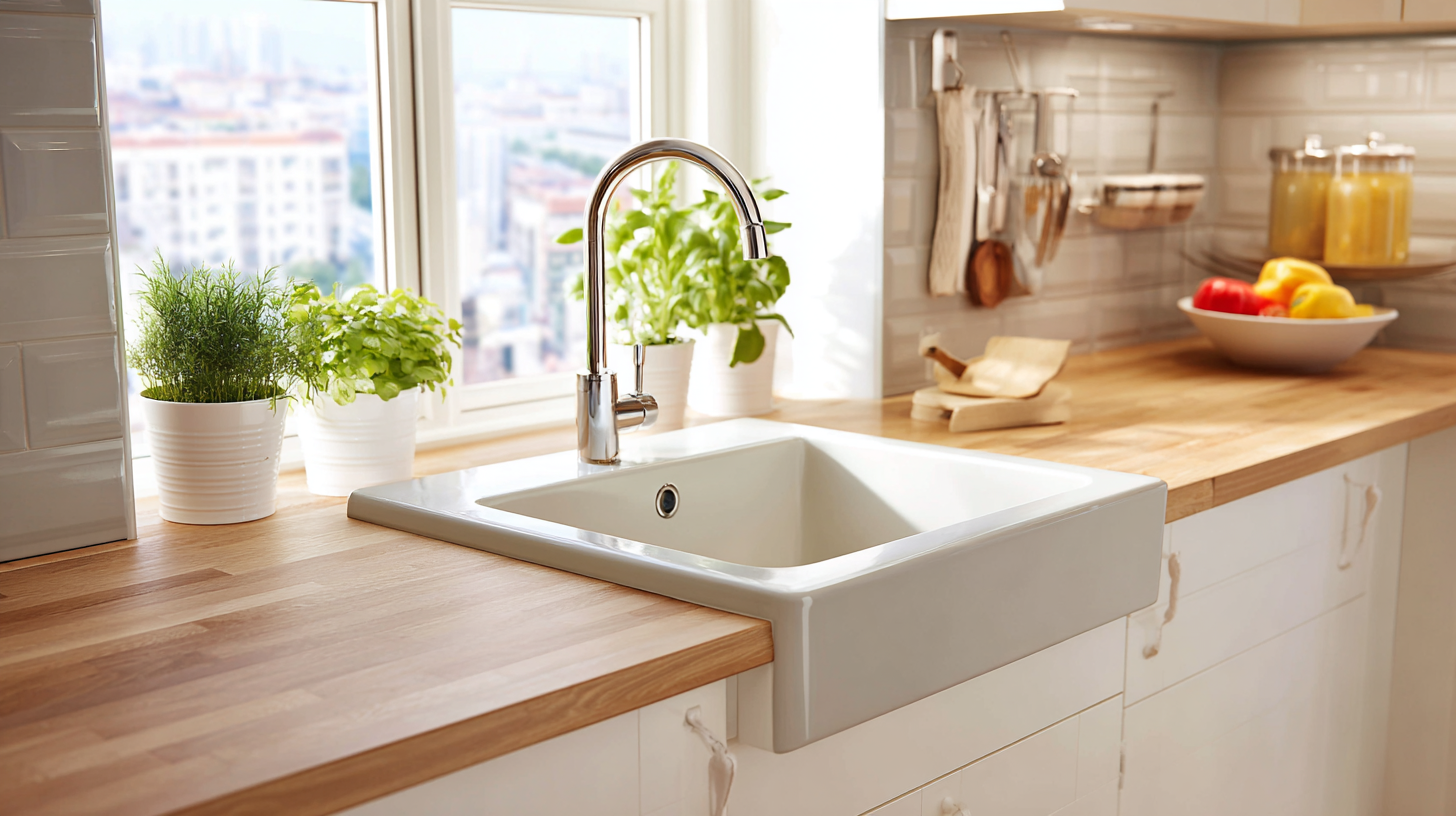
Understanding Different Sink Materials for Your Ikea Kitchen
When it comes to selecting the perfect sink for your Ikea kitchen, understanding the various sink materials available is crucial. Each material offers distinct benefits and challenges, making it essential to match the sink to your lifestyle and cooking habits.
Stainless steel sinks are a popular choice for modern kitchens due to their durability and resistance to stains and rust. They pair well with most cabinetry and countertops, making them versatile and easy to integrate into your design.
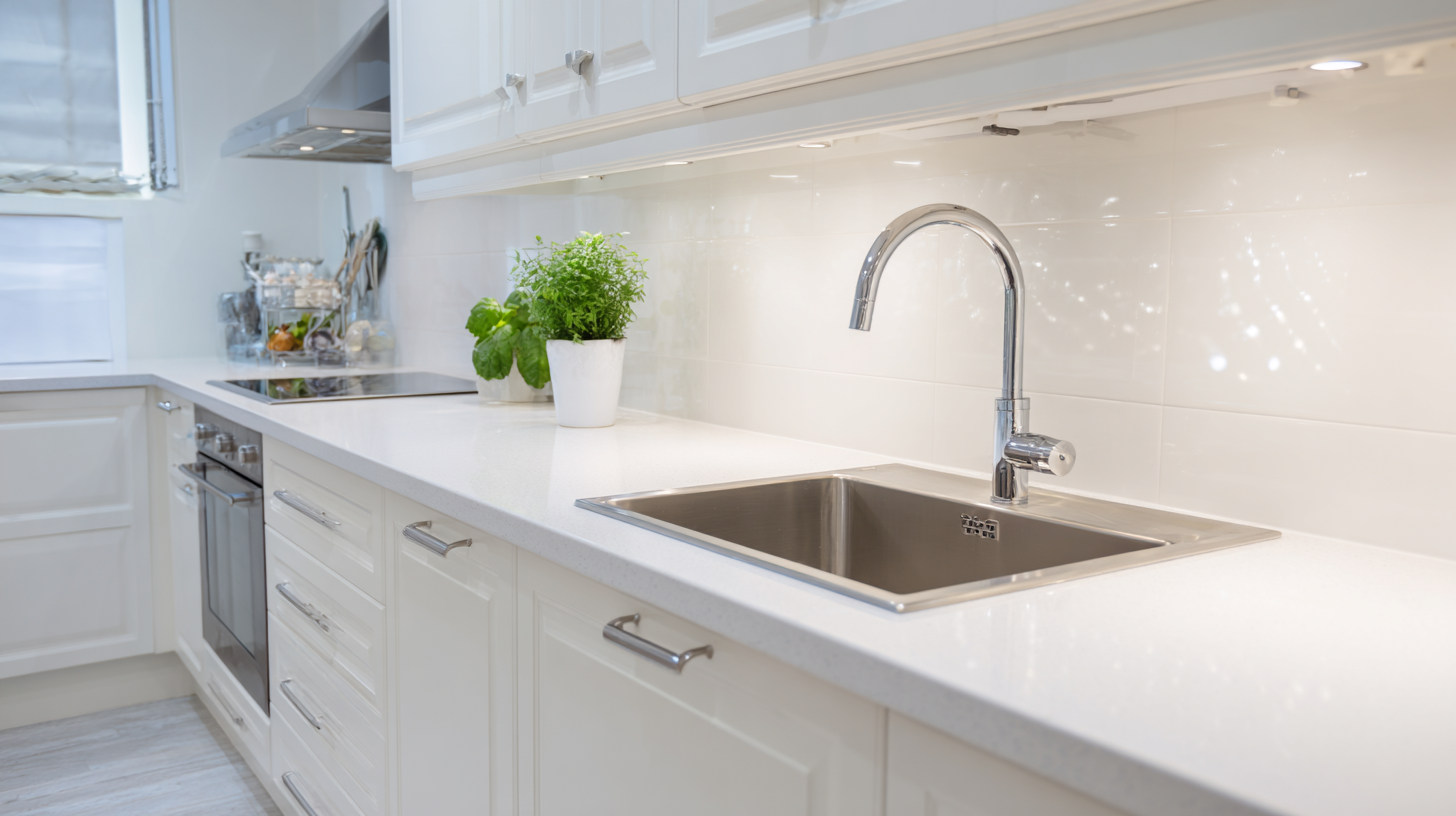 On the other hand, if you're aiming for a warmer aesthetic, composite sinks made from a blend of acrylic and natural stone can provide both beauty and practicality. They are available in various colors and styles, allowing for a personalized touch.
Additionally, fireclay and ceramic sinks offer a classic, timeless appeal, though they may require more care to avoid chipping. By weighing the pros and cons of these materials, you can ensure that your Ikea kitchen sink not only fits your style but also stands the test of time in functionality and appearance.
On the other hand, if you're aiming for a warmer aesthetic, composite sinks made from a blend of acrylic and natural stone can provide both beauty and practicality. They are available in various colors and styles, allowing for a personalized touch.
Additionally, fireclay and ceramic sinks offer a classic, timeless appeal, though they may require more care to avoid chipping. By weighing the pros and cons of these materials, you can ensure that your Ikea kitchen sink not only fits your style but also stands the test of time in functionality and appearance.
Evaluating Size: Finding the Right Fit for Your Space and Needs
When it comes to renovating your kitchen, choosing the right Ikea kitchen sink is crucial, and size plays a significant role in this decision. According to the National Kitchen and Bath Association (NKBA), 66% of homeowners consider the kitchen sink to be the most used fixture in their kitchen, making it essential to find a size that caters to both functionality and aesthetics. Standard kitchen sinks typically come in widths ranging from 22 to 33 inches. It is important to measure your available space accurately to ensure the sink fits seamlessly into your design, while also accommodating your daily kitchen tasks.
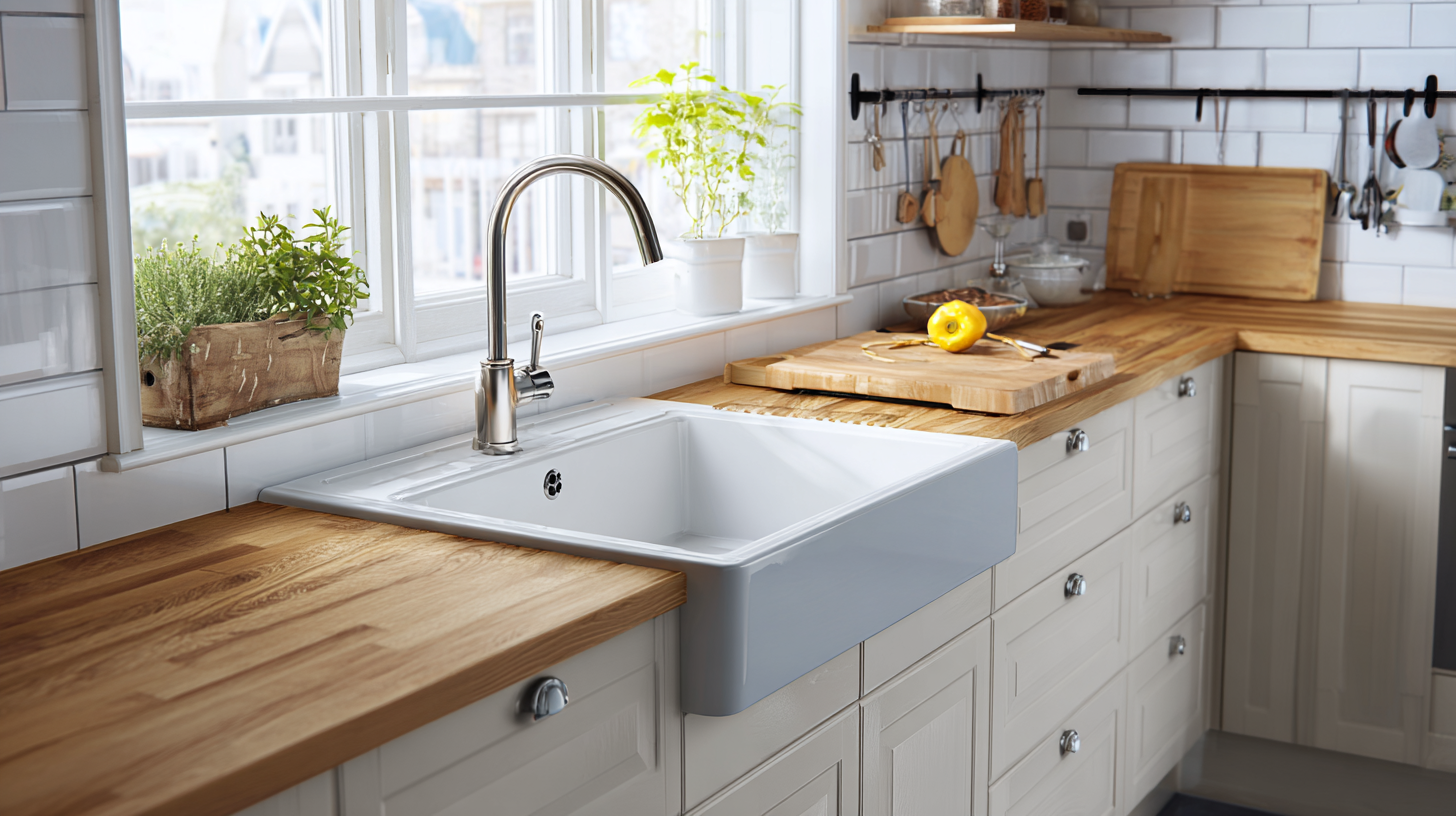
Moreover, the sink size should align with your lifestyle needs. A survey by Houzz indicates that families with children or frequent entertainers often prefer larger, deeper sinks, ideally measuring at least 10 inches in depth. This allows for easy washing of large pots and pans, as well as efficient meal prep. Conversely, those with smaller kitchens or minimalist lifestyles may opt for smaller, double-basin sinks, often around 30 inches, which can maximize counter space while still providing functionality. Keeping these considerations in mind will help you select the perfect Ikea kitchen sink that enhances both your kitchen's practicality and style.
Choosing the Ideal Style to Complement Your Kitchen Design
When selecting the ideal Ikea kitchen sink, it’s essential to consider how the style of the sink complements your overall kitchen design. The sink often serves as a focal point in the kitchen, so it's crucial to choose a style that resonates with the aesthetic you desire. For a modern kitchen, a sleek stainless steel sink with clean lines can create a polished and sophisticated look. On the other hand, a farmhouse sink can add a touch of rustic charm to a more traditional space, enhancing the warmth of wood cabinetry and other vintage elements.
Additionally, color and finish play significant roles in achieving a harmonious kitchen design. If your kitchen features light colors, a white or light gray sink can blend seamlessly, providing a subtle and inviting vibe. Conversely, darker options such as matte black or deep navy can introduce an element of drama and contrast. It’s also worth considering textures; a textured sink may offer an interesting visual component that complements smooth countertops or cabinetry. Ultimately, balancing these elements will help you create a kitchen that not only functions well but also reflects your personal style.
7 Essential Tips for Choosing the Perfect Ikea Kitchen Sinks
| Tip Number | Tip Description | Material | Style | Size |
|---|---|---|---|---|
| 1 | Consider the overall kitchen design theme. | Stainless Steel | Modern | 30 inches |
| 2 | Choose a sink that enhances functionality. | Composite | Contemporary | 33 inches |
| 3 | Evaluate the depth of the sink for efficient washing. | Ceramic | Farmhouse | 24 inches |
| 4 | Ensure the sink matches the kitchen color scheme. | Granite | Rustic | 36 inches |
| 5 | Think about the maintenance and cleaning ease. | Acrylic | Minimalist | 30 inches |
| 6 | Look for unique features, such as integrated cutting boards. | Porcelain | Vintage | 28 inches |
| 7 | Consider the faucet compatibility with the sink. | Stainless Steel | Industrial | 30 inches |
Exploring Sink Features: Drainage, Depth, and Accessories
When selecting the perfect kitchen sink from Ikea, it's imperative to consider essential features such as drainage, depth, and accessories. According to the National Kitchen and Bath Association (NKBA), an optimal sink depth not only enhances functionality but also improves the workflow in the kitchen. Sinks that are at least 9 to 10 inches deep help prevent splashes and offer ample space for washing larger pots and pans. This depth configuration is gaining popularity among homeowners, with 63% opting for deeper sinks compared to standard options.
Moreover, the drainage system of your sink can significantly impact your kitchen's efficiency. Most modern Ikea sinks feature advanced drainage designs that facilitate faster water flow, reducing the chance of clogs. A report from Kitchen & Bath Business indicates that sinks with a sloped bottom can increase drainage efficiency by up to 25%. Accessories like sink strainers and cutting boards, which are often tailored to fit Ikea sinks, further enhance usability and can encourage a more organized countertop. By prioritizing these features, homeowners can create a kitchen space that is both functional and aesthetically pleasing.
7 Essential Tips for Choosing the Perfect Kitchen Sink
Setting a Budget: Balancing Quality and Affordability in Sink Selection
When selecting an Ikea kitchen sink, setting a budget is crucial to balance quality and affordability. Research indicates that a well-planned budget can save homeowners up to 30% in kitchen renovation costs. For sinks, this means considering not just the purchase price but also potential long-term durability and maintenance. High-quality materials, like stainless steel or fireclay, while initially more expensive, may offer greater value by reducing replacement frequency and upkeep costs over time.
Industry experts recommend spending around 15-20% of your overall kitchen budget on fixtures, including sinks. This means if you’re renovating a kitchen with a $20,000 budget, allocating $3,000 to $4,000 for your sink and related plumbing would be prudent. Additionally, lighting fixtures and countertops should complement your sink choice, further enhancing the overall aesthetic without compromising on functionality. By focusing on these budget tips, you can achieve a stylish and efficient kitchen within your financial means.
FAQS
: You should consider both functionality and aesthetics, ensuring the sink fits seamlessly into your kitchen design while accommodating your daily tasks. Standard kitchen sink widths typically range from 22 to 33 inches.
Families with children or frequent entertainers often prefer larger, deeper sinks (at least 10 inches deep) for washing large items, while those with smaller kitchens or minimalist lifestyles may opt for smaller, double-basin sinks around 30 inches to maximize counter space.
An optimal kitchen sink depth is between 9 to 10 inches, as it helps prevent splashes and provides ample space for washing larger pots and pans.
The drainage system is crucial for kitchen efficiency. Modern Ikea sinks often feature advanced designs that enhance water flow, and a sloped bottom can improve drainage efficiency by up to 25%.
Useful accessories include sink strainers and cutting boards tailored to fit Ikea sinks, which can enhance usability and help maintain an organized countertop.
It is recommended to allocate around 15-20% of your overall kitchen budget for fixtures, including the sink. For a $20,000 kitchen renovation, this would mean spending about $3,000 to $4,000 on the sink and plumbing.
While high-quality materials like stainless steel or fireclay may have a higher initial cost, they can offer greater long-term value by reducing replacement frequency and maintenance costs.
It’s important to choose a sink that complements other fixtures, such as lighting and countertops, to enhance the overall kitchen aesthetic without sacrificing functionality.
Conclusion
In the quest for the perfect Ikea Kitchen Sinks, there are several essential considerations to keep in mind. First, understanding different sink materials is crucial, as each option brings unique benefits and aesthetics to your kitchen. Evaluating the size of the sink is equally important, ensuring it fits comfortably within your space while meeting your functional needs. Additionally, the sink's style should complement your overall kitchen design, enhancing its visual appeal.
Moreover, exploring sink features such as drainage, depth, and accessories can significantly impact usability and convenience. Lastly, setting a budget allows you to balance quality and affordability, ensuring you make a wise investment in your kitchen. At Jiangmen Yingtao Kitchen & Bathroom Co., Ltd., we specialize in manufacturing high-end kitchen sinks that cater to both domestic and international customers, reflecting our commitment to innovation and quality in design.
Related Posts
-

The Ultimate Guide to Choosing the Best Stainless Steel Kitchen Sinks for Your Home
-

What Makes the Best Kitchen Sink Essential for Modern Homes
-
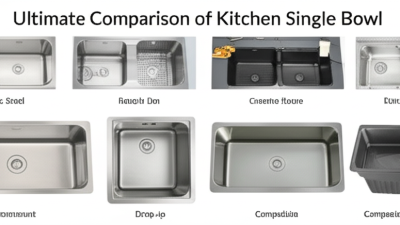
Ultimate Comparison of Kitchen Sink Single Bowl Options for Your Home
-
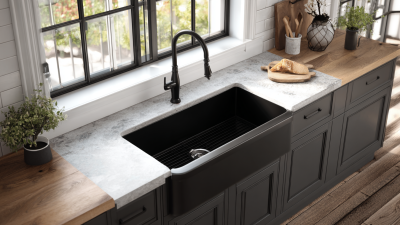
7 Essential Tips for Choosing the Perfect Black Stainless Steel Sink for Your Kitchen
-

How to Choose the Best Bathroom Basket for Your Space
-

The Ultimate Guide to Choosing the Best Ikea Kitchen Wall Spice Rack for Maximum Space Efficiency
Blog Tags:










